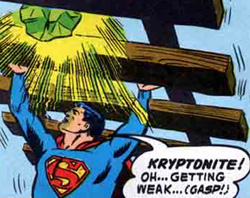 Years ago when I was a novice investor, I’d exhaust myself trying to figure out why things were happening in the markets. I would struggle to comprehend it all, and when there were market forces I couldn’t understand or explain, it would simply eat away at me. I was burning emotional energy and feeling frustrated at every turn. How could I trade equities when I did not fully grasp all the reasons for my stocks’ rallies and reactions?
Years ago when I was a novice investor, I’d exhaust myself trying to figure out why things were happening in the markets. I would struggle to comprehend it all, and when there were market forces I couldn’t understand or explain, it would simply eat away at me. I was burning emotional energy and feeling frustrated at every turn. How could I trade equities when I did not fully grasp all the reasons for my stocks’ rallies and reactions?
Eventually, I came to realize that I needed to stop marinating in stress by trying to achieve perfect knowledge. The “eureka” moment came to me when I finally recognized that I didn’t need to fix my analysis – I just needed to fix myself. And herein lies the misconception most investors hold about stock market knowledge.
As an investor, my objective is not the pursuit of intellectual wealth –my objective is that of financial wealth. Get that straight! Over time, it gradually dawned on me that none of the talking heads or big-name money managers could claim with absolute certainty that they actually know what makes a stock turn bullish or bearish. Their knowledge may seem impressive, but they certainly don’t have crystal balls to predict future price actions.
On the other hand, my charts did show with 100% certainty how the collective universe of buyers, sellers, analysts, thinkers, economists, etc. expressed their beliefs in the present moment. If I could ‘fix myself’ to focus on what was revealed in those present-moment charts, then I could relax and trade the “now”. With hindsight, I may eventually learn why an equity turned bullish or bearish, but that knowledge is just academically interesting. That’s not what is needed to execute a profitable trade in the present. To be an effective investor, I had to let go of that zealous need to know the particulars of each rally and reaction. Only by replacing that need with a genuine faith in what my charts were telling me could my attitude change, my weariness subside and my stress depart.
As I write this blog today, we’re in the midst of a market correction that has the potential to be very stressful for every investor. In an uncertain environment such as this, one simple way to reduce your stress level is to study the charts and learn the distinguishing personalities of past corrections. An appreciation of the past will make the present much more familiar and, presumably, understandable to you. Check out this link to my previous blog exploring eight past corrections.
As I’ve written before, stress is like kryptonite for investors. It may seem somewhat cynical, but when I’m in the zone and really in sync with the market, I’m operating in my own insulated bubble. The noise goes away and I am totally chart-focused. I find I listen more and I speak less. I still hunger for answers, but I look for those answers in my charts with all their complexity and vividness.
Not to be overly spiritual, but having an unwavering faith is important. Believe in what your charts are telling you, and then focus on trading the “now” – it will free you from a lot of stress. Clarity without stress leads to a more enlightened commitment to trade what is real and what the markets present you. It has been my experience that this clarity and faith in yourself and your charts is directly correlated to producing consistent stock market profits over the long term.
In closing, here’s a case in point that my readers might wish to share with their fundamentalist friends. On September 23, 2015, newspapers across the U.S. carried headings like this one: “Volkswagen emissions scandal hits 11 million vehicles.” This did not come as a surprise to any technician who’s been listening to what the price was saying in VW charts. The stock chart below of VLKAY – the US ADR for Volkswagen – triggered my 3-peaks sell rule back in June, and it was a classic example of how price action was telling a seriously negative story three months before it ever hit the news media.
I’d like to remind readers that a cardinal rule of investing is to sell on negative price action (which almost always precedes the drama and disaster that’s printed months later in the press). In this case, the chart had you exiting at $46 - $48 in June versus $25 in September after the newspaper headlines. Your charts are your best friends. The headlines are merely bubble gum for the mind.
Trade well; trade with discipline!
-- Gatis Roze, MBA, CMT
Developer of the StockCharts.com Tensile Trading ChartPack.
Presenter of the Tensile Trading DVD, Stock Market Mastery.
P.S. Click HERE for information on my future appearances & seminars.

